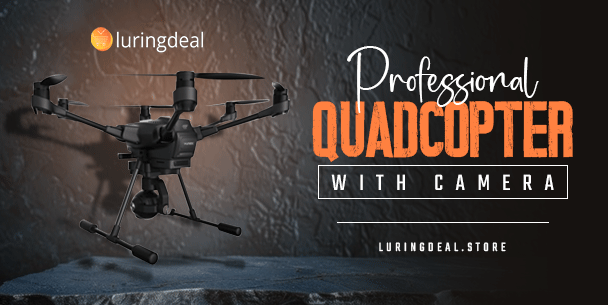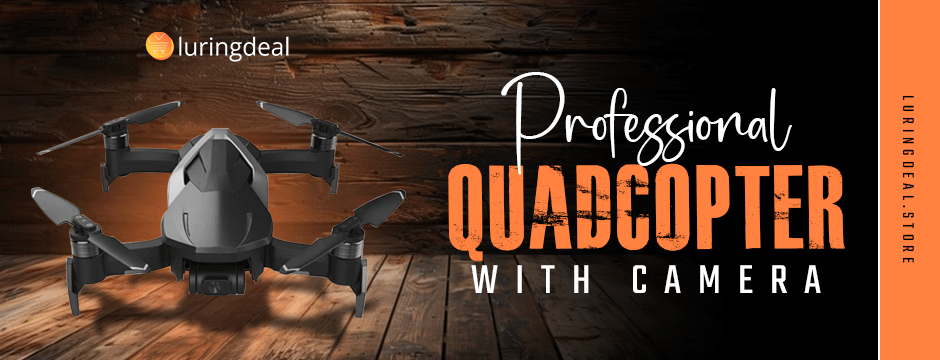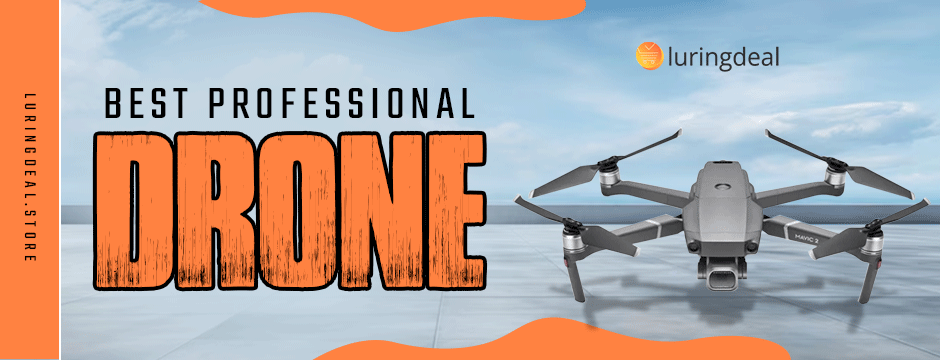The Evolution of LiDAR Technology in Drone Mapping

In the realm of professional quadcopter with camera, the integration of LiDAR (Light Detection and Ranging) sensors has ushered in a new era of precision mapping and surveying. This advanced technology combines the aerial agility of drones with the precise data capture capabilities of LiDAR, revolutionizing industries such as agriculture, construction, and environmental monitoring. This blog explores the evolution, applications, and prospects of LiDAR-equipped drones, showcasing how they have become indispensable tools in modern-day mapping solutions.
Introduction to LiDAR Technology
LiDAR, a remote sensing method that uses light in the form of a pulsed laser to measure distances to the Earth’s surface, has been instrumental in airborne mapping applications since its inception. Initially deployed on manned aircraft and satellites, the miniaturization of LiDAR sensors has facilitated their integration into unmanned aerial vehicles (UAVs) – commonly known as drones. This adaptation has unlocked new possibilities for high-resolution mapping and 3D modelling with unparalleled accuracy and detail.
The Integration of LiDAR in Professional Quadcopter With Camera
Technical Specifications and Capabilities
Professional drones equipped with LiDAR sensors boast impressive technical specifications. These sensors emit laser pulses and measure the time it takes for the light to return after hitting objects or the ground. By calculating the differences in return times and using advanced algorithms, LiDAR systems generate precise 3D maps of terrain, buildings, and vegetation. The integration of GPS and inertial measurement units (IMUs) further enhances positional accuracy, crucial for applications requiring centimetre-level precision.
Applications Across Industries
1. Agriculture
In precision agriculture, LiDAR-equipped drones revolutionize farming practices by providing detailed insights into crop health, soil conditions, and yield potential. These drones capture comprehensive elevation data and vegetation characteristics using laser pulses, enabling farmers to make informed decisions regarding irrigation scheduling, fertilizer application, and crop management strategies. By analyzing the 3D models and point clouds generated by LiDAR, farmers can identify areas of stress or nutrient deficiency in crops, optimize planting densities, and monitor crop growth throughout the season. This precision enhances productivity, reduces resource wastage, and contributes to sustainable agricultural practices.

2. Construction
LiDAR drones are indispensable tools in the construction industry, facilitating efficient site planning, progress monitoring, and documentation. The high-resolution 3D models generated from LiDAR data aid in visualizing project layouts, detecting clashes between design elements and existing structures, and accurately measuring volumes of materials. Construction managers leverage LiDAR for as-built documentation, capturing detailed as-built conditions of structures and infrastructure. This documentation ensures compliance with design specifications, enhances project coordination, and mitigates risks associated with discrepancies between design intent and actual construction.
3. Environmental Monitoring
Environmental conservation efforts benefit significantly from LiDAR technology deployed on drones. These sensors enable precise assessment of forest density, vegetation health, and habitat conditions without disturbing fragile ecosystems. LiDAR-equipped drones monitor changes in landscape topography caused by natural disasters such as wildfires, floods, or landslides, providing timely data for disaster response and mitigation planning. Conservationists use LiDAR to study wildlife habitats, map biodiversity hotspots, and monitor endangered species populations. By accurately mapping environmental changes over time, LiDAR drones contribute to informed decision-making for sustainable resource management and biodiversity conservation.
4. Urban Planning
Professional Quadcopter With Camera plays a crucial role in urban planning by creating detailed maps and models of urban areas with unparalleled accuracy. City planners utilize LiDAR data to design infrastructure projects, manage traffic flow, and plan for disaster response scenarios. The ability to capture precise elevation data facilitates flood modelling and drainage system design, improving urban resilience to climate change impacts. LiDAR-equipped drones assist in identifying optimal locations for new developments, assessing urban sprawl patterns, and monitoring infrastructure conditions for maintenance and upgrades. Urban planners rely on LiDAR technology to streamline city management, enhance public safety, and foster sustainable urban growth.
Advantages Over Traditional Mapping Methods
Compared to traditional surveying techniques, LiDAR-equipped Best Professional Drone offer several distinct advantages:
Speed and Efficiency
Drones equipped with LiDAR sensors revolutionize surveying and mapping by significantly reducing time-to-data acquisition compared to traditional methods. Ground-based surveys involve labour-intensive processes where surveyors physically traverse the terrain, measuring points manually. This method is time-consuming, especially for large areas or rugged landscapes. Similarly, manned aerial surveys require extensive planning, coordination, and operational logistics, often limiting survey frequency and coverage.
Cost-Effectiveness
The operational costs associated with LiDAR drone surveys are notably lower compared to manned aerial surveys, particularly in inaccessible or hazardous terrain. Manned aircraft require significant financial resources for fuel, pilot wages, maintenance, and operational downtime. Moreover, accessing remote or dangerous locations poses logistical challenges and safety risks, further escalating costs.
High Accuracy and Resolution
LiDAR sensors integrated into drones deliver unparalleled accuracy and resolution, surpassing traditional photogrammetry methods. These sensors emit laser pulses that bounce off surfaces and return to the sensor, capturing precise distance measurements. By analyzing the timing and intensity of these pulses, LiDAR systems generate highly detailed 3D point clouds that accurately represent terrain features, structures, and vegetation.
Challenges and Future Developments
While LiDAR technology in drone mapping has seen significant advancements, challenges such as data processing complexity, sensor calibration, and regulatory restrictions remain. Future developments focus on enhancing sensor miniaturization, improving real-time data processing capabilities, and expanding the integration of artificial intelligence for automated analysis and decision-making.

Conclusion
In conclusion, the integration of LiDAR technology in best professional drone has transformed the landscape of mapping and surveying across various industries. From precision agriculture to urban planning, LiDAR-equipped drones offer unparalleled capabilities in capturing detailed 3D data with accuracy and efficiency. As technology continues to evolve, the potential applications of LiDAR drones are set to expand further, driving innovation and reshaping how we perceive and interact with spatial data.



















Leave a comment